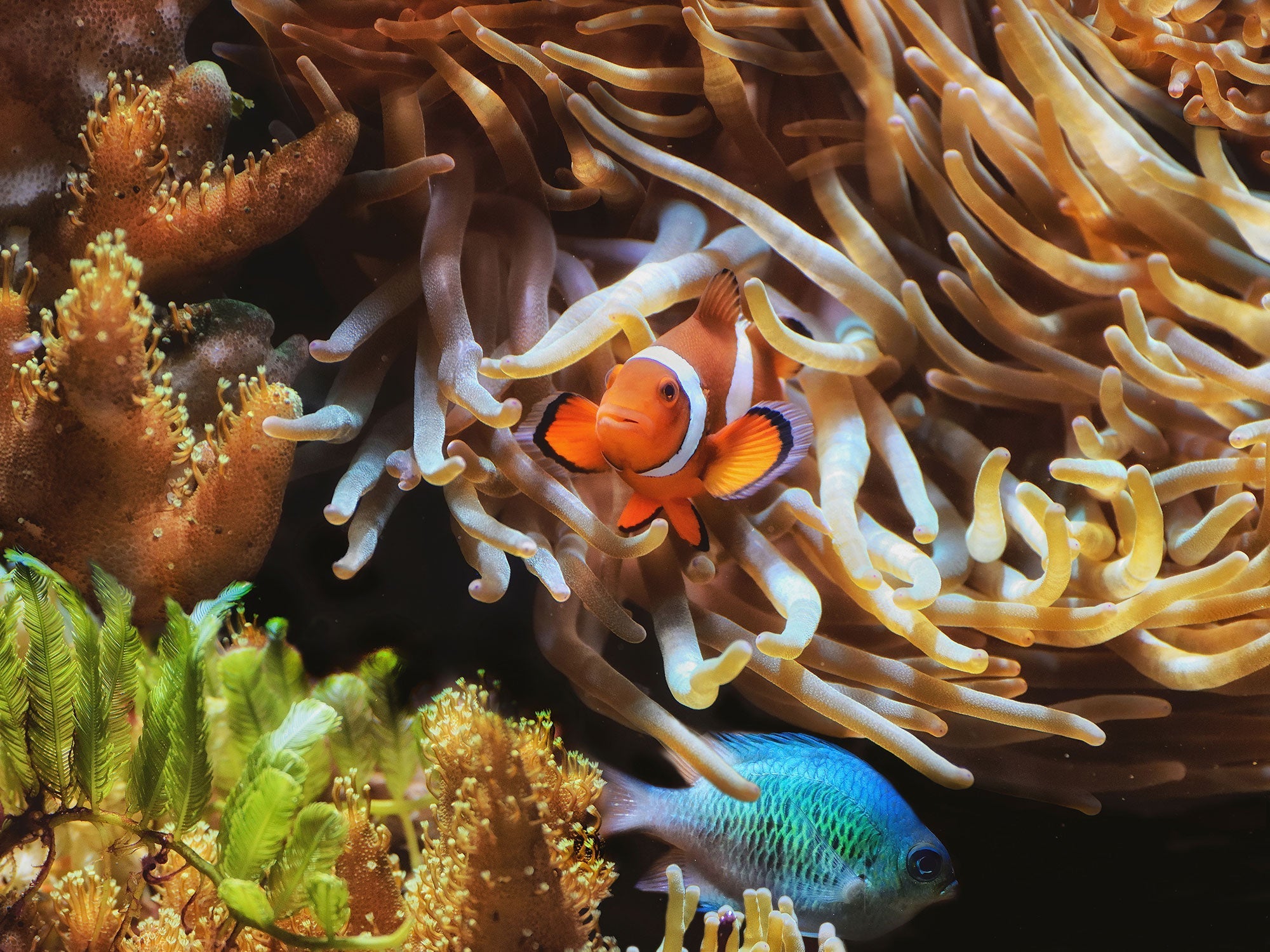
Underwater photography: equipment and shooting techniques
Anyone who has ever been on a dive will appreciate the magical world under water, where everything is so still and shines in a completely different light. The strange and fascinating impressions you get there automatically make you want to take them back to land so you can take a closer look at them. However, underwater photography is not for beginners, as it requires a great deal of photographic expertise and extensive equipment. In order to be perfectly prepared for such a dive and to master the best shooting techniques for incredible underwater images, there is a lot to consider and, in addition to a passion for the genre, you should also have patience and technical knowledge.
Preparing for underwater photography
Before the actual dive starts with all the important equipment for underwater photography, it is important to be familiar with a few basic things. This includes correct underwater behavior in a fragile environment, such as a coral reef. You should not touch the bottom, step on corals, hold on to them or touch anything else. To ensure that nothing goes wrong in this respect and unintentional damage occurs, you should be a really good diver before you embark on the adventure of underwater photography. Basically, you should have your equipment under control and be able to achieve perfect buoyancy. Only when you are safely balanced underwater can you take sharp pictures.
Once you are familiar with these basic things, you should also optimize your finning technique so that you can adapt it to different situations. This way you can avoid stirring up sand and disturbing the photos and marine life. In order to find them better and record them with the camera, you should also familiarize yourself with their biology and know exactly where and when they are. This way, you can think carefully about what you want to photograph before the dive and keep your focus on it.
Photo equipment for great underwater pictures
As in few other photographic genres, underwater photography requires very special equipment that is very different from normal photographic equipment. What remains the same, however, is the importance of a good camera, which should be selected according to your own ideas and budget. A compact camera with an underwater housing is ideal for beginners, while advanced photographers often prefer DSLRs or mirrorless system cameras, which offer more creative freedom and better image quality.
When photographing underwater, everything is conditioned by the fact that the electronic devices of the photographic equipment are inherently incompatible with the water of the destination. Probably the most important element of underwater photographic equipment is therefore a good underwater housing, which completely isolates the camera from the surrounding wet water and thus protects it. Such an underwater housing also has good handles that make it easier to handle underwater and allows the camera to be operated underwater. The housing should not only be robust and practical, but also pressure-resistant, especially if you want to take pictures at greater depths. Underwater housings are available for all types of cameras, so you are sure to find one that is precisely tailored to your camera and your personal requirements.
When it comes to choosing the right lens for great underwater shots, wide-angle lenses are particularly popular as they allow you to capture a large section of the image and are therefore particularly suitable for photographing reefs, large sea creatures or wrecks. However, some photographers prefer to capture the smallest details underwater and work with a macro lens. You should already be an experienced diver and good underwater photographer for this, as photographing the enchanting nudibranchs or coral polyps requires not only knowledge and patience, but also perfect buoyancy control and a steady hand.
The deeper you dive, the less natural light penetrates the underwater world and the more important it is to have the right external light sources with you to illuminate the photo perfectly. At the same time, water naturally absorbs the red tones of the light spectrum, which often gives underwater images a green or blue cast. In order to capture the natural colors in which the subject appears underwater and to enhance the contrasts, it is therefore essential to have an artificial light source with you. External flashes, also known as strobes, are suitable for this purpose as they offer a strong light output and allow precise control of the direction and intensity of the light. An alternative to this are video lights, which provide continuous light and are particularly useful for video recordings or macro photography. On most dives, diving lamps are used anyway for better orientation under water. They can also be used for taking photos in dark environments and illuminating caves.
In addition to these essential pieces of equipment, other accessories such as arms and clamps for attaching flashes or video lights to the camera housing, diffusers that scatter the flash light and provide softer illumination or color filters that reduce the blue cast of underwater photos can be useful. Q-rings and silicone grease, which ensure effective sealing, are also important for the maintenance and preservation of the underwater housing.
Shooting techniques for impressive underwater images
Once you have the perfect photographic equipment ready for the dive and have familiarized yourself with it in detail, you are almost ready to go. As time underwater is limited, it can be worth thinking about shooting techniques and compositional issues in advance. As a general rule, you should keep the distance to the subject as short as possible in order to achieve clearer colors and contrasts. To correct the natural blue cast under water, you should set the camera's white balance correctly and possibly use external light sources.
In terms of camera settings, a smaller aperture is recommended, which ensures a greater depth of field, which is particularly useful for wide-angle shots. A short exposure time should also be selected to avoid motion blur, which can occur with fast-moving subjects. To minimize image noise, the lowest possible ISO value should also be selected.
Dive deeper into the world of underwater photography! In the Oberwerth Shop you will find high-quality camera bags, camera straps, half cases and photo backpacks that protect your valuable equipment safely and stylishly - whether on land or on the way to your next diving adventure. Perfect for the demanding conditions of underwater photography, our products combine functionality, comfort and elegant design. Discover them now and prepare your equipment optimally - for shots that show the fascinating underwater world in all its glory!
Conclusion
If you are already a lover of the underwater world and already have some diving experience and safety in the water, you will certainly love the adventure of underwater photography. In addition to the necessary equipment and some basic photographic techniques, however, it is also important to respect the endangered and fragile balance of coral reefs & co. and to treat the creatures living there with respect. There is a lot to discover in this largely unknown and strange world that is worth taking in, so please dive in deep.

